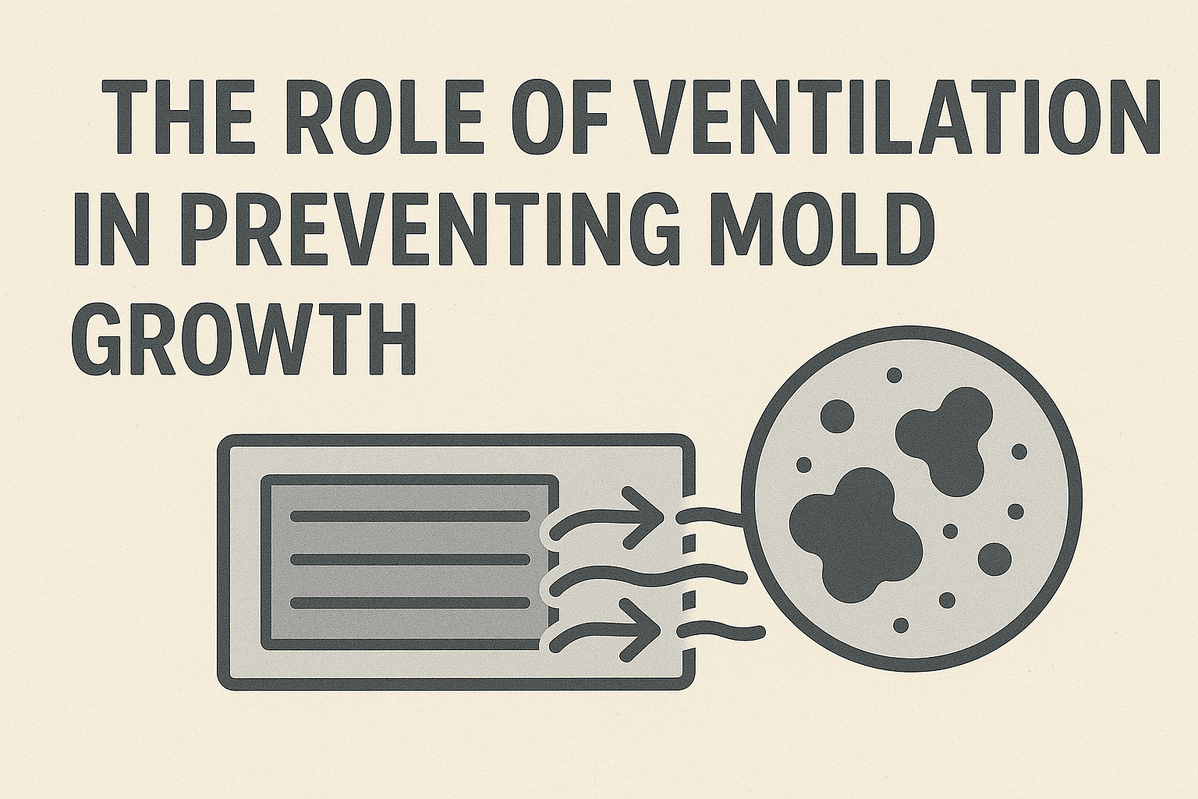Understanding Mold Growth: A Persistent Indoor Threat
Mold is a silent intruder that thrives in moist, stagnant environments, causing both structural damage and health issues such as allergies, asthma, and respiratory infections. It spreads rapidly by releasing microscopic spores into the air, which then settle on damp surfaces and begin to grow. The key to halting this invasive process is effective ventilation—a crucial yet often overlooked component of mold prevention.
Why Ventilation Is the First Line of Defense Against Mold
Reduces Humidity and Moisture Accumulation
Moisture is mold’s best friend. Without it, mold cannot survive. Everyday activities such as cooking, showering, and even breathing increase indoor humidity. Proper ventilation:
- Circulates air efficiently
- Expels moisture-laden air outdoors
- Introduces fresh, drier air indoors
By maintaining humidity levels below 60%, ventilation deprives mold of the conditions it needs to grow.
Prevents Condensation on Cold Surfaces
In poorly ventilated areas, warm moist air comes in contact with cold surfaces, such as windows, walls, and pipes—leading to condensation. These droplets create a perfect breeding ground for mold. Ventilation systems:
- Reduce temperature differentials
- Promote even air distribution
- Eliminate excess indoor moisture
This helps keep surfaces dry and less conducive to mold formation.
Improves Air Quality and Mold Spore Control
Stale indoor air allows mold spores to accumulate. Ventilation dilutes airborne spores and helps filter them out before they settle. With proper air exchange, you can:
- Limit spore circulation
- Reduce allergen exposure
- Minimize chances of mold colonization
Types of Ventilation Systems That Fight Mold
Natural Ventilation: Leveraging Architectural Design
Natural ventilation uses windows, vents, and doors to facilitate airflow. When strategically placed and regularly opened:
- It flushes out moist, polluted air
- Brings in fresh outdoor air
- Reduces the need for mechanical systems
While ideal for mild climates, it may not be effective year-round or in high-humidity regions.
Mechanical Ventilation: Consistent and Controlled Airflow
Mechanical systems offer a reliable way to regulate indoor air, regardless of external conditions. These include:
Exhaust Fans
Installed in kitchens, bathrooms, and laundry rooms, they:
- Extract moisture at the source
- Reduce localized humidity quickly
- Should run during and after moisture-generating activities
Whole-House Ventilation Systems
These advanced systems balance intake and exhaust, maintaining a controlled air exchange rate. Benefits include:
- Uniform humidity control
- Enhanced air filtration
- Better comfort and energy efficiency
HRV and ERV Systems (Heat/Energy Recovery Ventilators)
Ideal for energy-conscious homes, these systems:
- Transfer heat and moisture between incoming and outgoing air
- Maintain indoor temperature while removing moisture
- Offer year-round mold prevention benefits
Key Areas That Require Proper Ventilation
Attics and Crawl Spaces
These hidden areas are particularly susceptible to mold due to:
- Poor air circulation
- Temperature fluctuations
- Roof or ground moisture infiltration
Installing ridge vents, soffit vents, and fans can keep these zones dry and mold-free.
Bathrooms and Kitchens
High humidity zones demand targeted ventilation. Ensure:
- Exhaust fans are vented outside, not into attics or wall cavities
- Fans run for at least 20–30 minutes after showers or cooking
- Ducts are clean and unblocked
Basements
Basements naturally attract moisture through ground seepage or poor waterproofing. Additions like:
- Dehumidifiers
- Window wells
- Mechanical ventilation
can dramatically reduce mold risk in these lower levels.
Best Practices for Maintaining Effective Ventilation
1. Monitor Indoor Humidity
Use a hygrometer to track moisture levels. Aim for 30–50% relative humidity. Automatic ventilation systems with sensors can adjust airflow as needed.
2. Maintain Your HVAC System
A well-maintained HVAC system:
- Circulates air evenly
- Filters out particulates, including spores
- Prevents moisture buildup in ducts
Change filters regularly and schedule annual maintenance checks.
3. Inspect for Obstructions
Blocked vents, ducts, or filters reduce airflow. Clean regularly and inspect for dust, debris, or mold itself in vents.
4. Use Ventilation Synergistically with Dehumidifiers
In particularly humid climates or seasons, ventilation may need help. Dehumidifiers:
- Remove excess moisture quickly
- Are ideal for basements and laundry rooms
- Can complement whole-home ventilation strategies
The Cost of Poor Ventilation: Health, Property & Financial Risks
Health Hazards
Mold releases allergens, irritants, and even mycotoxins, leading to:
- Chronic coughing
- Sneezing
- Eye irritation
- Severe asthma attacks or lung infections
Structural Damage
Unchecked mold can:
- Weaken drywall and wood
- Corrode HVAC components
- Compromise insulation and framing
Decreased Property Value
Homes with mold problems:
- Fail inspections
- Require expensive remediation
- Lose buyer interest and resale value
Prevention via ventilation is always cheaper than remediation.
Conclusion: Invest in Ventilation, Protect Your Property
Mold is not just unsightly—it’s dangerous, destructive, and expensive. The smartest, most cost-effective way to combat mold growth is through strategic, consistent ventilation. From small exhaust fans to advanced whole-house systems, ventilation keeps indoor spaces dry, safe, and healthy.
Ensure that every room in your home breathes properly, and you’ll not only prevent mold—you’ll create a better living environment for everyone.


